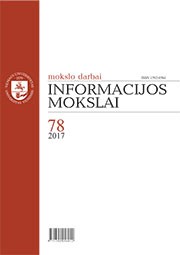Daiktų interneto objektų identifikavimo metodų palyginimas
A Comparison of the Identification Methods of Objects of the Internet of Things
Author(s): Raimundas Savukynas, Virginijus MarcinkevičiusSubject(s): Electronic information storage and retrieval, Social development, Social Informatics, ICT Information and Communications Technologies
Published by: Vilniaus Universiteto Leidykla
Keywords: internet of things; objects identification; future internet; internet services; smart devices;
Summary/Abstract: The Internet of Things is an integral part of the future Web part, which is defined as a global and dynamic network infrastructure, which is capable of self-configuring and is based on standardized and compatible communications protocols, where physical and virtual objects have identification characteristics, physical attributes, virtual personalities that use intelligent interfaces and are directly integrated into the unified information network. The resources of the Internet of Things and services are globally distributed within the information network, so it is necessary to have a mechanism which allows the identification of global smart devices, their services and resources. Typically, the identification consists of the assigning names for the resources and the mechanism of the addressing resources in order to discover and access the remote resources of the Internet of things. Modern networks use the Universal Resource Identifier (URI), which identifies a global resource, its type and a set of equivalent names. The URI uniquely allows to identify physical objects, which are located anywhere in the world, using the Electronic Product Code (EPC) technology. EPC allows URI to also be used with Radio-Frequency Identification (RFID). The RFID technology is used for marking and tracing items, which is based on the use of the frequency signal of the radio in the object tag for information recording and reading. This technology in literature is mentioned as one of the main identification and realization measures of the Internet of Things. The purpose of this article is to review and compare the identification methods of objects of the Internet of Things.
Journal: Informacijos mokslai
- Issue Year: 2017
- Issue No: 78
- Page Range: 66-82
- Page Count: 17
- Language: Lithuanian

